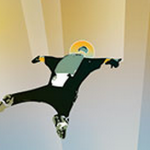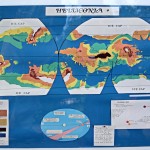Extraordinary news this week from NASA that their Keplar probe has discovered a planet with 2 suns in the distant Cygnus constellation. Christened (for the time-being) Keplar 16 B the planet has both an orange sun and a red sun, and is thought to be a mostly gaseous planet the size of Saturn about 200 light years away.
Brian had this to say of the news:
Perhaps you have already seen the astonishing news, announced on the front page of the ‘New York Times’ last week and elsewhere.
NASA telescopes have located a planet revolving about two suns, one a smaller, one a much larger sun.
This is precisely the situation depicted in my ‘Helliconia Trilogy’. In the late seventies I spent four years researching and then writing the considerable work. It was published simultaneously in three volumes by Jonathan Cape in the U.K. and Atheneum in the U.S.A.. An extract appeared in ‘The Times’ on 27th February 1982, shortly after publication. Since then, the trilogy has been published all round the world; I even have a Samizdat edition from the days of the Soviet Union.
The attractions of this unusual scenario, and the effect of the dual-sun influence on the inhabitants of the planet (and the unfolding of ‘what happens’) were therefore widely recognised, although hardly by a literary elite.
This new discovery proves that my imagined worlds, conceived in the late nineteen-seventies, were entirely correct.
Sincerely, Brian W.Aldiss
NASA’s mission is one of an amazing scale:
[NASA] announced Monday that they have identified 1,781 planet “candidates” as they peer at a patch of sky covering more than 156,000 stars, in the constellation Cygnus.
Of those 121 appear to be orbiting in the habitable zones of their host stars – a region of space around the star where a planet’s temperature would allow liquid water to pool on the surface. Some of these habitable-zone objects appear to be so-called super Earths, which tip the scales at between roughly twice Earth’s mass to 10 times the mass of the Earth.
There’s lots more about the mission here, on the Christian Science Monitor(!)
I remember the creation of Helliconia fondly as various relief maps of the planet and model fagors appeared in the house. I was a teenager and perhaps not aware of the amount of dad’s time the creation of this world took. However it’s a great trilogy that received high acclaim.
You can read more about Helliconia on Wikipedia, buy the trilogy on Amazon, and see our own website pages here: Spring, Summer and Winter.




